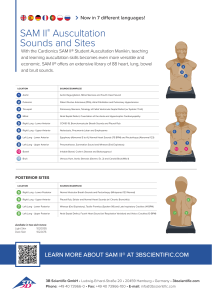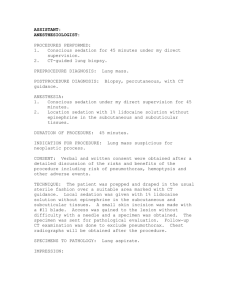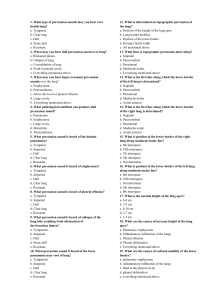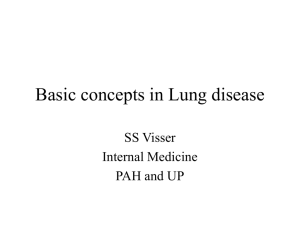Lung Sounds on Percussion and Auscultation
advertisement
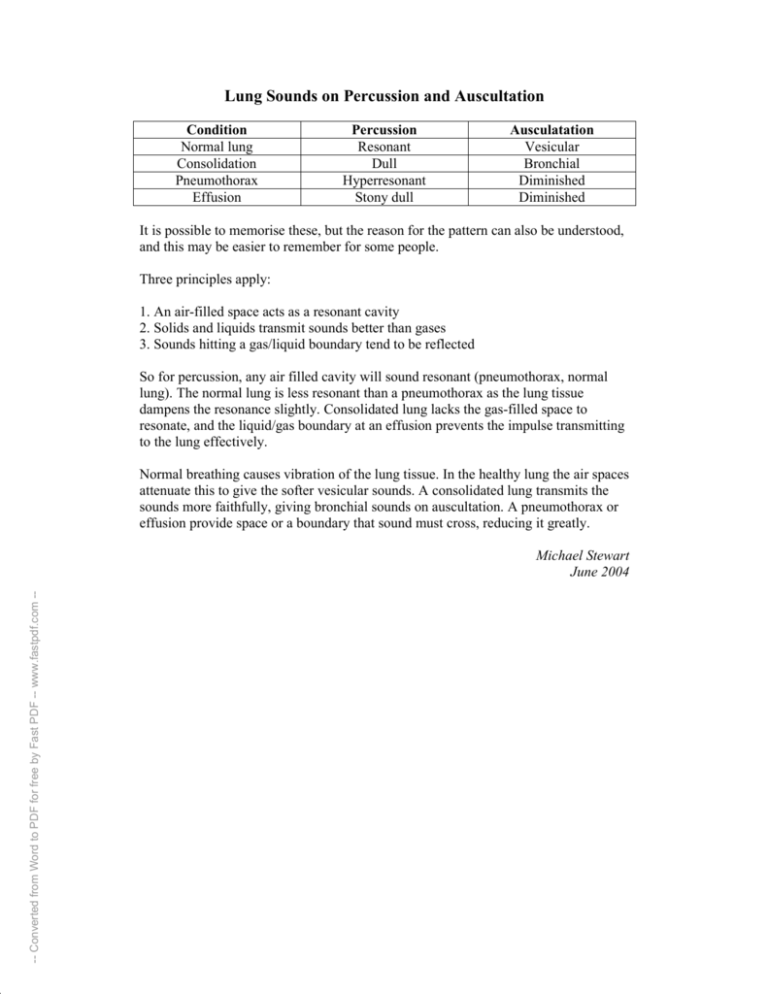
Lung Sounds on Percussion and Auscultation Condition Normal lung Consolidation Pneumothorax Effusion Percussion Resonant Dull Hyperresonant Stony dull Ausculatation Vesicular Bronchial Diminished Diminished It is possible to memorise these, but the reason for the pattern can also be understood, and this may be easier to remember for some people. Three principles apply: 1. An air-filled space acts as a resonant cavity 2. Solids and liquids transmit sounds better than gases 3. Sounds hitting a gas/liquid boundary tend to be reflected So for percussion, any air filled cavity will sound resonant (pneumothorax, normal lung). The normal lung is less resonant than a pneumothorax as the lung tissue dampens the resonance slightly. Consolidated lung lacks the gas-filled space to resonate, and the liquid/gas boundary at an effusion prevents the impulse transmitting to the lung effectively. Normal breathing causes vibration of the lung tissue. In the healthy lung the air spaces attenuate this to give the softer vesicular sounds. A consolidated lung transmits the sounds more faithfully, giving bronchial sounds on auscultation. A pneumothorax or effusion provide space or a boundary that sound must cross, reducing it greatly. -- Converted from Word to PDF for free by Fast PDF -- www.fastpdf.com -- Michael Stewart June 2004






